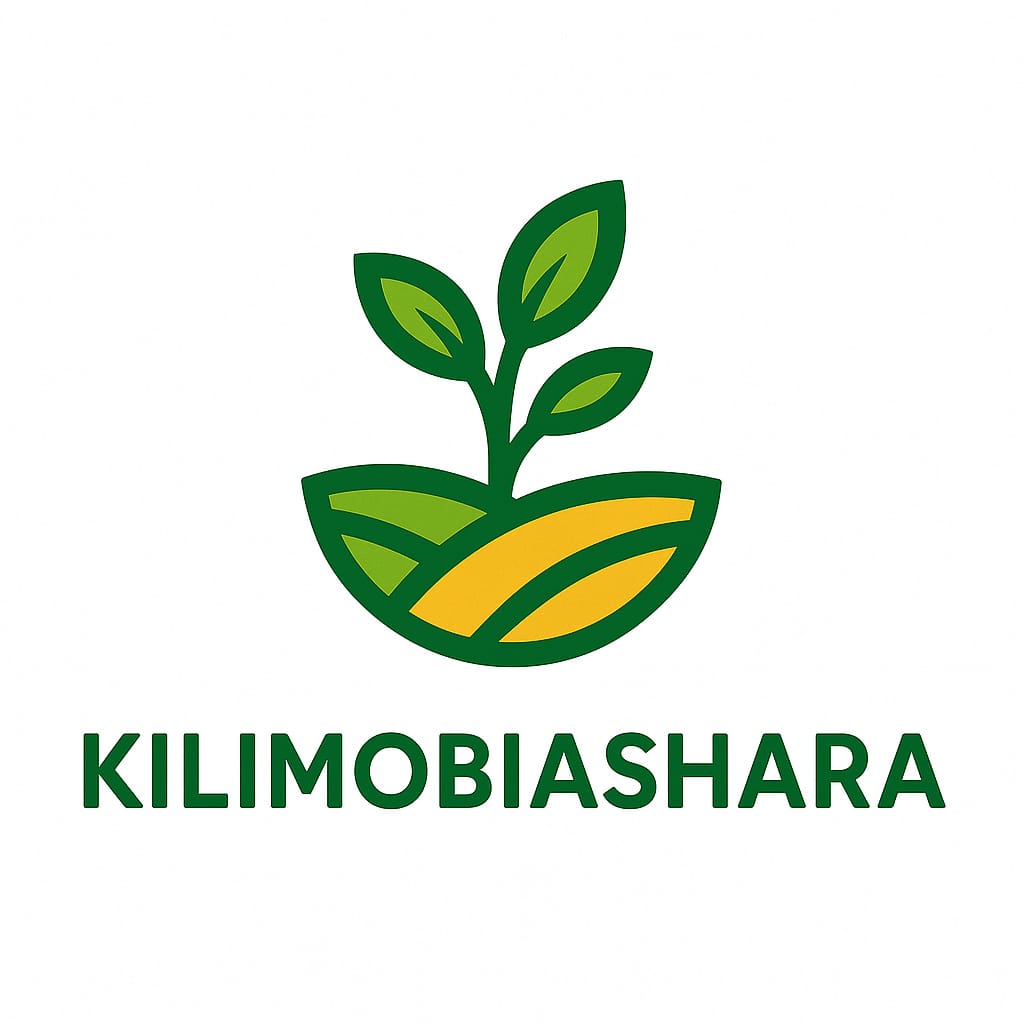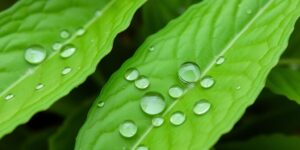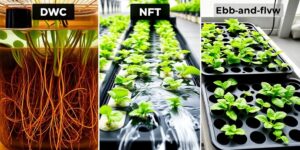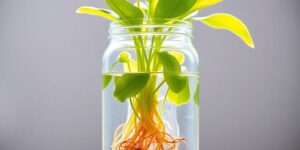Thinking about growing your own food but don’t have much space or a green thumb for soil? You’re not alone. Many people are turning to hydroponics, which is basically growing plants using water and nutrients instead of dirt. It might sound a bit fancy, but honestly, it’s more doable than you think. This guide is here to break down the basics of hydroponics for beginners, helping you get started on your own soilless garden journey.
Key Takeaways
- Hydroponics is a method of growing plants using nutrient-rich water instead of soil.
- Different hydroponic systems exist, like Deep Water Culture (DWC) and Nutrient Film Technique (NFT), each with its own way of delivering nutrients.
- Setting up your garden involves choosing a growing medium, providing light, and getting the right tools for monitoring.
- Many plants, from lettuce to tomatoes, can grow well in hydroponic systems, but understanding their specific needs is important.
- Success comes from starting small, staying consistent with care, and learning from others in the hydroponic community.
Understanding Hydroponics For Beginners

So, you’re thinking about growing plants without dirt? That’s what hydroponics is all about. Basically, instead of soil, we use water that’s packed with all the good stuff plants need to grow – nutrients, minerals, you name it. This lets the roots get exactly what they need, when they need it, which can make plants grow faster and bigger than they might in regular soil. It’s a pretty neat way to garden, especially if you don’t have a lot of space or your soil isn’t the best for growing.
What is Hydroponics?
Hydroponics is a method of growing plants using mineral nutrient solutions in water, without soil. The plant roots are supported by an inert medium like perlite, coco coir, or rockwool. This approach allows for direct delivery of nutrients to the roots, bypassing the soil altogether. It’s a way to give plants a perfectly balanced meal, all the time.
Why Hydroponics Works
Plants need a few key things to thrive: light, water, carbon dioxide, and nutrients. In soil gardening, roots have to search through the dirt to find these nutrients, and sometimes they have to compete with weeds. Hydroponics cuts out the middleman. By dissolving nutrients directly into the water, we make sure the plant roots have constant access to everything they need. This means less energy wasted searching and more energy put into growing. Plus, it’s incredibly water-efficient, often using up to 90% less water than traditional methods because the water is recirculated. It’s a really smart system for growing plants efficiently.
Debunking Hydroponic Myths
There are a few ideas out there that might make hydroponics seem tricky, but let’s clear them up.
- Myth 1: It’s too complicated for beginners. Honestly, there are super simple systems out there, like Deep Water Culture, that are great for starting out. You don’t need to be a scientist to get going.
- Myth 2: It’s really expensive. While some fancy setups can cost a bit, you can totally start with budget-friendly DIY options or smaller kits. The initial cost often pays for itself with better yields.
- Myth 3: The food doesn’t taste as good. This one’s just not true. When plants get the exact nutrients they need, they can actually develop even richer flavors. Many chefs prefer the taste of hydroponically grown produce because of this precise nutrient control.
It’s easy to think that growing without soil is some kind of futuristic, complicated thing, but at its core, it’s just about giving plants the nutrients they need in the most direct way possible. Think of it like giving your plants a perfectly balanced smoothie instead of just letting them forage around.
Choosing Your Hydroponic System
Choosing the right hydroponic system is a big step when you’re starting out. It’s not as complicated as it might sound, and there are several popular methods that work well for beginners. Think of it like picking the right tool for a job – you want something that’s effective but also manageable for your first try.
Deep Water Culture Explained
Deep Water Culture, or DWC, is probably one of the simplest systems to get into. Basically, the plant roots hang down into a reservoir filled with nutrient-rich water. An air pump with an air stone keeps the water oxygenated, which the roots need to breathe. It’s pretty straightforward to set up and maintain, making it a great starting point. You can grow things like lettuce, spinach, and herbs really well with DWC.
Nutrient Film Technique Basics
The Nutrient Film Technique, or NFT, is another popular choice. With NFT, plants are usually placed in channels or tubes, and a thin film of nutrient solution flows continuously over their roots. This constant flow means the roots get plenty of water, nutrients, and oxygen. It’s known for being quite efficient with water and nutrients, but it can be a bit more sensitive to power outages than DWC. This system is excellent for leafy greens and strawberries.
Drip Systems and Aeroponics
Drip systems are pretty common and work by delivering nutrient solution directly to the base of each plant through a network of tubes and emitters. You can control how often and how much solution each plant gets. Aeroponics is a bit more advanced; it involves misting the plant roots directly with nutrient solution. This gives the roots fantastic access to oxygen, leading to very fast growth, but it requires more precise control and reliable equipment. If you’re looking for a system that can grow a variety of plants, including larger ones like tomatoes or peppers, a drip system might be a good fit. For those wanting to experiment with cutting-edge methods, aeroponics is worth exploring.
When selecting a system, consider the types of plants you want to grow, the space you have available, and how much time you can dedicate to maintenance. Starting with a simpler system will help you learn the basics without getting overwhelmed.
Setting Up Your First Garden
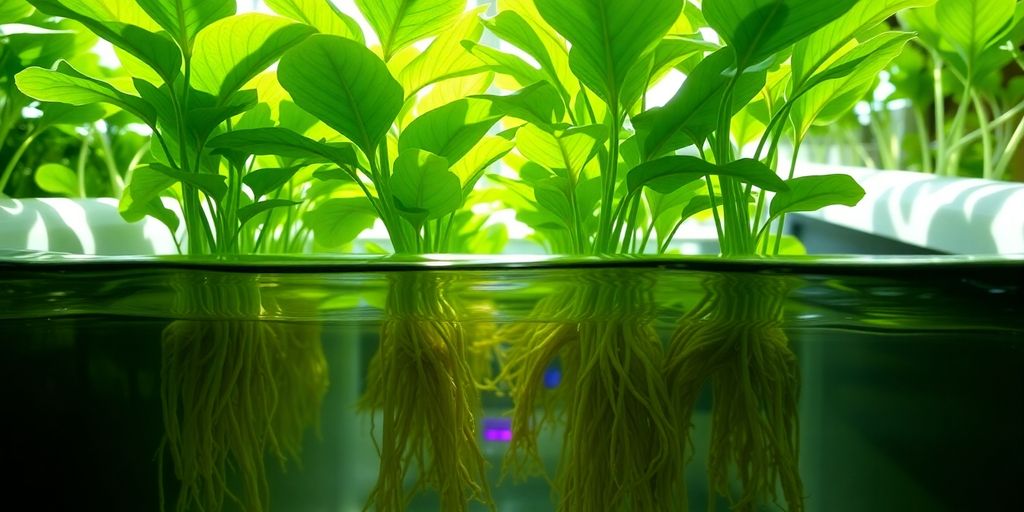
Alright, so you’ve picked out your system, maybe a simple Deep Water Culture setup or perhaps you’re feeling adventurous with a Nutrient Film Technique. Now comes the fun part: actually getting your garden going. It’s not super complicated, but there are a few things to get right.
Selecting the Right Growing Medium
First off, you need something to hold your plants in place since there’s no soil. Think of it as a little support system for your plant’s roots. There are a bunch of options out there, and what works best often depends on your system and what you’re growing. Some popular choices include:
- Coco Coir: Made from coconut husks, it’s great at holding water and air. It’s pretty sustainable too.
- Perlite: These are little volcanic glass pebbles. They’re super light and help with drainage and aeration, stopping roots from getting waterlogged.
- Rockwool: Made from molten rock spun into fibers, it’s a common choice, especially for starting seeds. It holds a good amount of water but can sometimes be a bit tricky with pH.
- Clay Pebbles (Hydroton): These are baked clay balls that are pH neutral and offer excellent drainage and aeration. They’re reusable, which is a nice bonus.
Choosing the right medium is key for healthy root development. It needs to provide support while also allowing for good airflow and water retention, depending on your system’s needs.
Providing Adequate Lighting
Plants need light to make food, and in a hydroponic setup, you’re often controlling this environment yourself. If you’re lucky enough to have a sunny spot, great! But most of us will need some help from grow lights. LED lights are really popular right now because they don’t use a ton of electricity and you can get ones that give off the specific light spectrum plants need to grow strong. You’ll want to make sure your lights are positioned correctly – not too far away that the plants don’t get enough light, and not too close that they scorch the leaves. It’s a bit of a balancing act, but you’ll get the hang of it.
Essential Tools for Monitoring
This is where you become a plant detective. You can’t just stick a plant in water and forget about it. You’ve got to keep an eye on a few things to make sure your plants are happy and healthy. The most important ones are:
- pH Meter: This little gadget tells you how acidic or alkaline your nutrient solution is. Plants can only absorb nutrients within a certain pH range, so keeping it stable is super important. You’ll usually want to aim for a pH between 5.5 and 6.5, but it varies a bit by plant.
- EC/TDS Meter: This measures the electrical conductivity (EC) or total dissolved solids (TDS) in your water. Basically, it tells you how much nutrient stuff is dissolved in there. Too little, and your plants starve; too much, and you can burn them.
- Thermometer: Keeping an eye on the temperature of your nutrient solution and the air around your plants is also a good idea. Extreme temperatures can stress your plants.
Having these tools will make a huge difference in keeping your hydroponic garden thriving. It might seem like a lot at first, but it quickly becomes second nature. You can find all sorts of starter kits that include these items, making it easier to get going with your first hydroponic system.
Plant Selection For Soilless Growing
So, you’ve got your system picked out and you’re ready to get growing. The next big question is, what exactly should you plant? Luckily, hydroponics is pretty forgiving, and a lot of plants do really well without soil. The key is to match the plant to your system and your setup. Some plants are just easier to start with, especially when you’re just figuring things out.
Best Plants For Hydroponic Beginners
When you’re just starting out, it’s smart to pick plants that grow fast and don’t need super specific conditions. This way, you can get a feel for how everything works without too much stress.
- Leafy Greens: Lettuce, spinach, kale, and Swiss chard are fantastic choices. They grow quickly, don’t need a lot of space, and are pretty tolerant of slight variations in nutrient levels or pH. You can often harvest them multiple times, too.
- Herbs: Basil, mint, cilantro, parsley, and chives are also super easy. They love the consistent moisture and nutrient delivery that hydroponics provides. Plus, having fresh herbs on hand is always a bonus!
- Strawberries: While they might seem a bit more advanced, strawberries actually do quite well in hydroponic systems, especially DWC or NFT. They just need consistent light and the right nutrient mix.
Understanding Plant Needs
Even with easy plants, you still need to pay attention to what they need. It’s not just about water and nutrients; light and the growing medium play big roles too.
- Nutrient Requirements: Different plants need different nutrient balances. Leafy greens generally need more nitrogen, while fruiting plants like tomatoes or peppers need more phosphorus and potassium when they start flowering. You’ll want to use a nutrient solution specifically designed for hydroponics.
- pH Levels: Most plants in hydroponic systems prefer a pH between 5.5 and 6.5. This range allows them to absorb nutrients most effectively. You’ll need a pH meter to check this regularly.
- Light: Most vegetables and herbs need at least 6-8 hours of direct light per day. If you’re growing indoors, you’ll need good quality grow lights. The type of light and its intensity can affect how well your plants grow and even their flavor. For example, spider plants are known to be quite forgiving in various light conditions spider plants.
It’s easy to get excited and want to grow everything at once, but starting with a few reliable plants will help you learn the ropes without getting overwhelmed. You can always expand your garden as you get more comfortable with the process.
Maintaining Your Hydroponic Garden
Keeping your hydroponic garden humming along is all about consistency and paying attention to the details. It’s not super complicated, but you do need to be a bit proactive. Think of it like having a pet; they need regular care to stay healthy and happy.
Monitoring pH and Nutrient Levels
This is probably the most important part of keeping your plants thriving. Plants can only absorb nutrients when the water they’re in has the right pH balance. If the pH is too high or too low, they won’t be able to ‘eat’ properly, even if you’ve got all the right food in the water. You’ll need a pH testing kit – they’re pretty affordable and easy to use. You’ll want to aim for a pH range that’s good for whatever you’re growing, usually somewhere between 5.5 and 6.5. You’ll also need to keep an eye on the nutrient concentration, often called EC or PPM. Too little, and your plants get hungry; too much, and you can burn their roots. Regularly topping up your reservoir with fresh nutrient solution is key. It’s a good idea to do a full reservoir change every week or two.
Preventing Pests and Diseases
While hydroponic systems generally have fewer pest and disease problems than soil gardens because there’s no soil to harbor them, it’s not impossible. The biggest culprits are usually poor hygiene and stressed plants. Make sure your setup is clean before you start, and try to keep the area around your garden tidy. If you do spot any unwelcome guests like aphids or fungus gnats, or signs of disease like wilting or spots on leaves, act fast. Sometimes a simple wipe-down with a damp cloth or a gentle, plant-safe spray can do the trick. A clean environment is your best defense.
Staying Consistent With Care
Hydroponics rewards routine. It’s not a ‘set it and forget it’ kind of deal. You need to check your water levels, pH, and nutrient strength regularly. How often depends on your system and how fast your plants are growing, but a quick check every couple of days is a good habit. This consistency helps you catch any problems early before they become big issues. It also helps you learn what your plants like and how they respond to different conditions. Building a routine makes maintenance feel less like a chore and more like a natural part of growing your own food. You can find a lot of helpful tips for setting up your first system at hydroponics setup guides.
The key is to observe your plants closely. They’ll often give you clues about what they need. Wilting leaves might mean a water or nutrient issue, while yellowing could point to a pH problem or nutrient deficiency. Learning to ‘read’ your plants is a big part of becoming a successful hydroponic gardener.
Achieving Hydroponic Success
So, you’ve got your system set up, your plants are in, and you’re feeling pretty good about this whole hydroponics thing. That’s awesome! But like anything worth doing, keeping a hydroponic garden thriving takes a bit of consistent effort. It’s not a ‘set it and forget it’ kind of deal, but the payoff is totally worth it.
Starting Small and Learning
Look, nobody expects you to become a hydroponics guru overnight. The best way to get good at this is to start with a manageable setup. Maybe just a few lettuce plants or some herbs. This way, you can really get a feel for how the system works, how the plants respond, and what kind of attention they need without getting overwhelmed. Think of it as your training wheels. You’ll learn a ton just by observing, making small adjustments, and seeing what happens. Don’t be afraid to mess up a little; that’s how you really learn.
Connecting With Fellow Growers
Seriously, don’t try to go it alone. There are tons of people out there who are just as into hydroponics as you are, or maybe even more so. Online forums, local gardening clubs, even social media groups can be goldmines of information and support. You can ask questions, share your successes (and your failures!), and get advice from people who have been doing this for a while. It’s a great way to pick up new tricks and troubleshoot problems you might run into. Plus, it’s just more fun when you have a community to share it with.
Harvesting Your Bounty
This is the part everyone looks forward to, right? Harvesting your own fresh produce is incredibly satisfying. The exact timing will depend on what you’re growing, but generally, you want to harvest when the plants are at their peak. For leafy greens, you can often do a ‘cut and come again’ harvest, taking outer leaves as needed. For fruiting plants, keep an eye on the fruits themselves. The taste of homegrown, hydroponically grown food is usually way better than anything you can buy at the store. It’s the reward for all your hard work and attention. Enjoy it!
Ready to Grow?
So, you’ve learned the basics of hydroponics – how it works, some popular systems, and what you need to get started. It might seem like a lot at first, but remember to start small. Pick a simple system, a few easy plants, and just give it a try. You’ll learn as you go, and honestly, there’s a real satisfaction in watching those plants grow without any soil. Keep learning, stay consistent with your checks, and don’t be afraid to connect with other growers. Before you know it, you’ll be harvesting your own fresh produce right from home. Happy growing!
Frequently Asked Questions
What exactly is hydroponics?
Hydroponics is a way to grow plants without using soil. Instead, plants get their food from a special mix of nutrients in water. This helps them grow faster and bigger because they don’t have to search for food in the dirt.
Can I grow vegetables and fruits with hydroponics?
Yes, you can grow many different plants with hydroponics! Leafy greens like lettuce and spinach are super easy. Tomatoes, peppers, and even strawberries can also grow well once you get the hang of it.
Is hydroponics really expensive to get started?
Not at all! While some fancy setups can cost a bit, you can start small with simple, inexpensive systems. Many people even build their own using basic supplies, making it affordable for anyone.
Do plants grow slower in hydroponics?
It’s actually quite the opposite! Because plants get exactly what they need, when they need it, they grow much faster than in soil. You can often harvest your plants sooner.
Are hydroponic gardens more likely to have bugs or diseases?
Not usually. Since the roots are in water and not soil, they are less likely to attract the usual garden pests. Plus, keeping your system clean helps prevent problems.
What’s the easiest way for a beginner to start?
It’s a great idea to start with something simple, like a Deep Water Culture system, which is pretty easy to set up. Growing a few easy plants like lettuce will help you learn the basics before trying more complex plants or systems.
